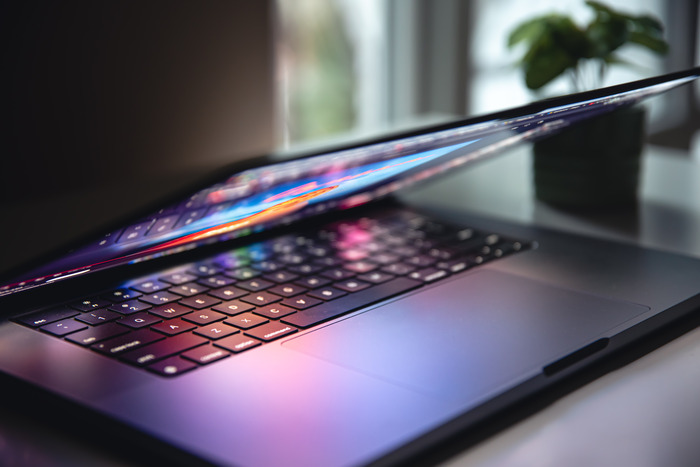Although a Chromebook presents a simplified computing experience, it might not feel as powerful as it could be once you see it for the first time out of the box.
Although ChromeOS was designed for simplicity and speed, by modifying software settings, activating hidden features, and personalizing the interface, one can greatly improve its functionality.
After purchase, there’s more you can do to improve your Chromebook experience from accessing Linux programs to optimizing power management.
Many manufacturers and stores provide post purchase emails to guide new Chromebook buyers through setup, upgrades, and premium features they might not know about.
These messages frequently include security patches, software upgrade tips, as well as trial offers for cloud-based tools or accessories. Following these tips allows consumers to get the most from their gadget.
Enabling Linux Apps for Advanced Capabilities
Enabling Linux is one of the most significant upgrades you can do to a Chromebook. This makes powerful desktop applications—including media editing tools, development tools, professional-grade office apps—accessible.
Linux apps give a desktop-like experience with greater customization as well as full keyboard and mouse capabilities, unlike Android apps, which are geared for mobile devices.
Visit Settings > Advanced > Developers to enable Linux on a Chromebook and turn on Linux Development Environment.
This lets you install and run programs, including Visual Studio Code, GIMP, and LibreOffice, thus bridging the gap between ChromeOS and traditional running systems like Windows or macOS. Developers who wish to build and test code without a separate machine will especially find it helpful.
Fine-Tuning Power Settings for Longer Battery Life
Although Chromebooks are renowned for their excellent battery life, users who spend a lot of time on their computers could choose to change power settings to extend their use time. ChromeOS automatically maximizes performance depending on activity by default, yet manually adjusting power settings might affect the length of a charge.
Limit background activities, lower screen brightness, and disable unnecessary extensions to prolong battery life. You can also change the sleep settings to stop the device from running idle on power.
Built-in power consumption monitoring features in ChromeOS let users track which apps deplete the battery the fastest. Turning on energy-saving tools will greatly increase daily use for people who carry their Chromebooks on the go.
Customizing the ChromeOS Interface for a Personalized Experience
Though ChromeOS has a minimalist look, there are various methods for customizing the UI to better fit your workflow.
First things new users can do is change the shelf and launcher to keep frequently used applications within reach. Users can choose to auto-hide settings, pin apps, or change orientation to maximize screen space by right-clicking on the shelf.
Chrome flags include experimental tools that boost output for deeper customization. Advanced window management, gesture navigation, and Dark Mode are just a few of the features that users have the option to enable.
Through system updates—often highlighted in post purchase emails from stores or Google itself—Google regularly releases new interface improvements. These emails not only introduce new features but also guide users on how they can turn them on for a better experience.
Exploring Android Apps for Expanded Functionality
Running Android apps from the Google Play Store is one of Chromebooks’ most significant features. Users now have access to a wider variety of software, including productivity tools, creative apps, and mobile games, in addition to web-based applications.
While some Android apps run perfectly on Chromebooks, some could call for changes including window resizing or compatibility setting activation.
Users can turn on tablet mode for touch-friendly apps or modify keyboard keys to maximize the experience. With the addition of active stylus support to some high-end Chromebooks, Android sketching programs such as Sketchbook or Krita become a viable substitute for traditional desktop applications.
As their compatibility grows, Android and ChromeOS provide a hybrid experience that combines the best of both mobile and desktop computing.
Expanding Storage Options for Maximum Flexibility
While Chromebooks are built on cloud-based computing, local storage is still quite important for handling Linux apps, downloads, and offline files.
Most Chromebooks come with 32GB to 128GB of internal storage, which might not be sufficient for consumers who regularly handle huge media files, program installations, or operate offline. Luckily, using outside solutions makes expanding storage effortless.
Many Chromebooks support microSD cards, which allows users to increase storage space without carrying additional accessories.
Simple integration with ChromeOS via USB-C external drives and cloud storage options like Google Drive, Dropbox, and OneDrive allows you to unload less frequently used files easily while keeping local space free.
Unlocking the Full Potential of Your Chromebook
More than just a lightweight browsing tool, a Chromebook is an adaptable device that can be personalized, optimized, and expanded to fit any user’s requirement.
There are many ways to improve the Chrome OS experience, from enabling Linux programs for professional work to changing power settings for efficiency to personalizing the interface for a better workflow.
Regular upgrades and feature rollouts help Chromebook customers expect their device to get better over time. Post-purchase emails from stores and Google highlight many of these improvements, which guarantees consumers remain aware of new features, security advancements, and premium trials.
A Chromebook can go from being a basic web-based machine to a robust, customized computing solution by tapping into these hidden possibilities.
The post Upgrading Your Chromebook Experience: Software and Features to Explore After Purchase appeared first on About Chromebooks.

